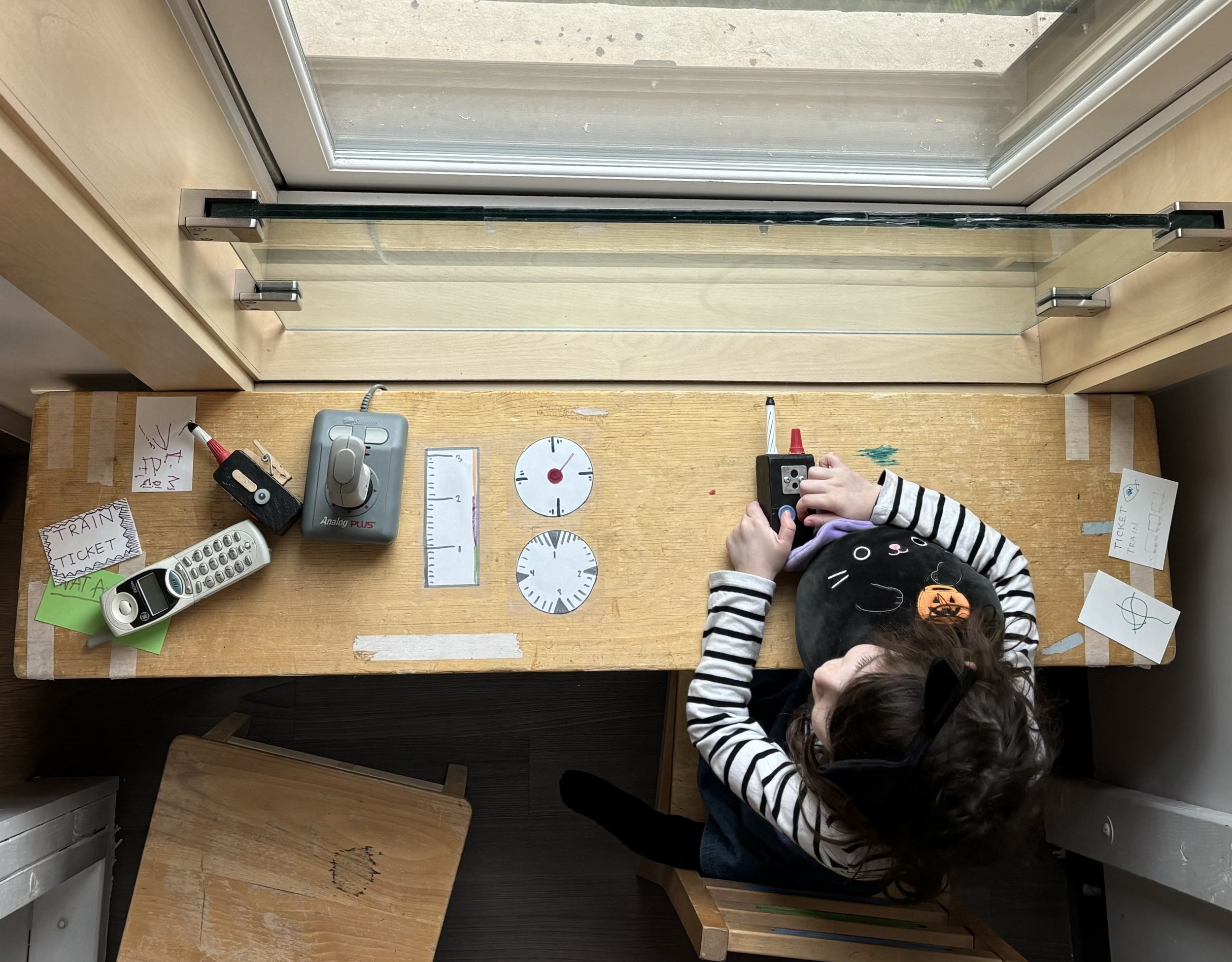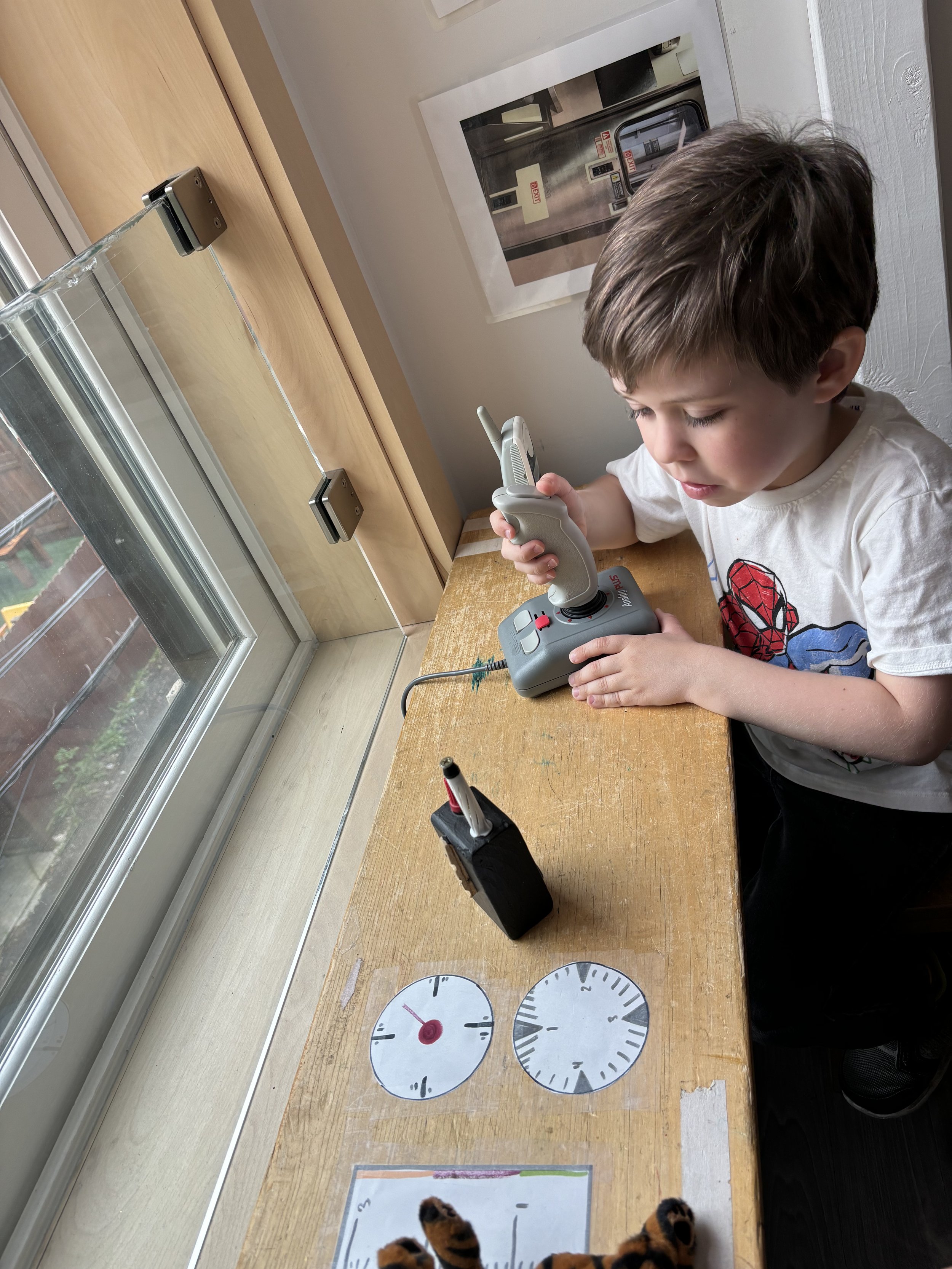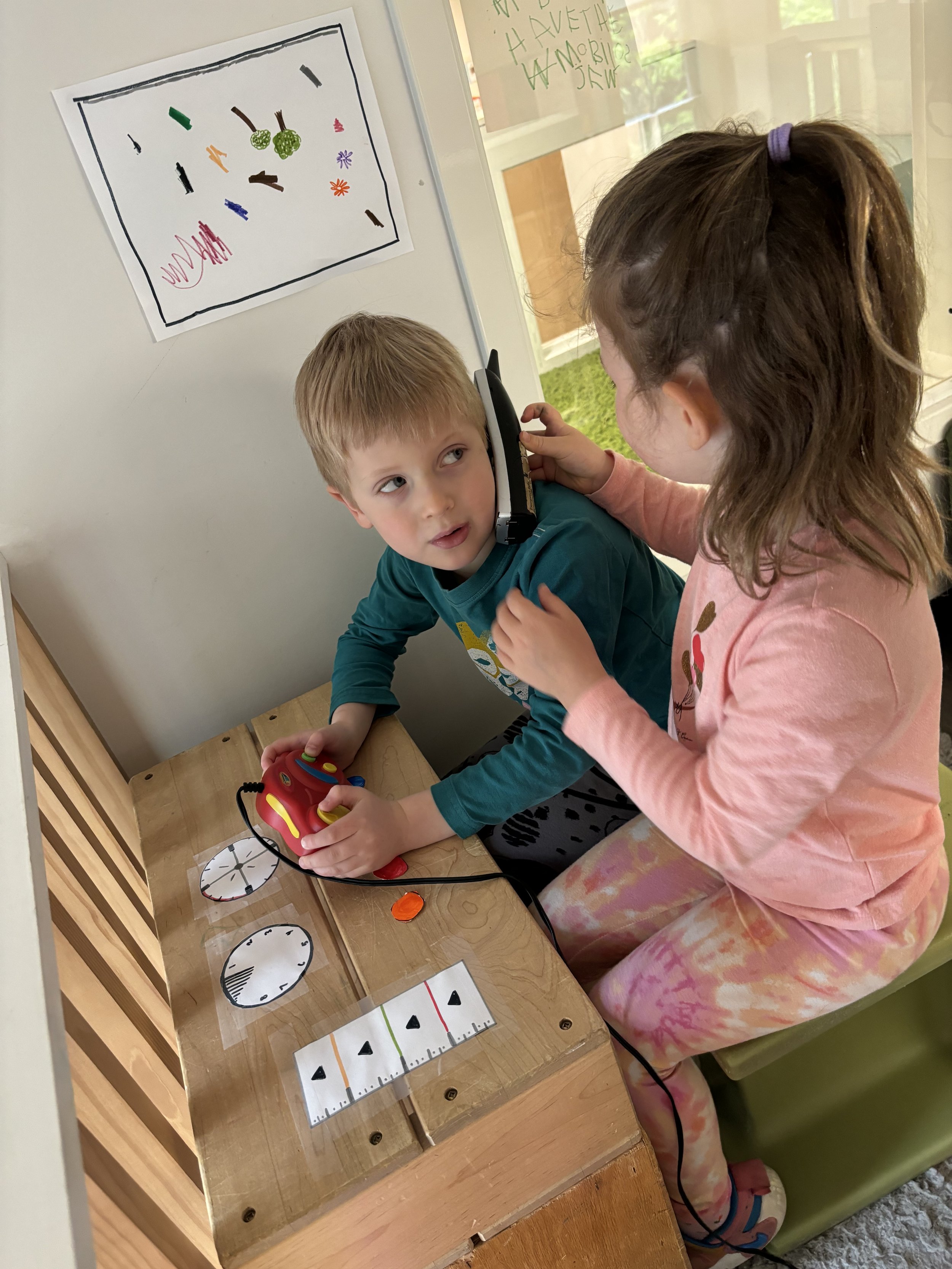Dramatic play is one of the vehicles through which children develop a range of competencies and explore their ideas about the world around them. It fosters creativity, problem solving skills, language development, communication skills, collaboration and cognitive growth. Throughout the school year, teachers encourage dramatic play in the classroom by providing props to expand existing play themes and inspire new ones. Our dramatic play area (or playhouse, as the kids call it) started out with a kitchen and baby dolls, but then became a pizza restaurant, an ice cream shop and a doctor’s office.
While these early changes to the dramatic play area were coordinated by teachers, we know that by springtime, kids in Junior Kindergarten are ready to take the reins. They have more ideas for play and are able to listen to the ideas of their peers. They are able to have a group discussion, consider multiple ideas and vote on a final outcome. With teacher support, JK students generate ideas for the playhouse and vote on them. Once the theme has been decided, teachers help children to express what they already know about the topic and provide resources to expand their knowledge. In some cases, those resources are books, artifacts or pictures, but in others, we are able to use our own neighborhood as a resource! In the past, we have visited local restaurants, veterinarian offices, post offices, libraries and parks to support our playhouse transformations. In this case, we visited the local CTA station.
Children’s observations during the visit were recorded with their own drawings and dictation taken by teachers. These observations provided a blueprint for what to include in our train station, which roles were needed and what players in those roles would do.
Take a look at JK-East’s classroom newsletter documenting this process of playhouse transformation!
All aboard the jk express
Over the course of the school year, our classroom playhouse has been transformed into a pizza restaurant, an ice cream parlor, and a doctors’ office. As you may have read in our last newsletter, the latest iteration of our playhouse is a train station, voted on by both our morning class and JK, and supported by their ideas in a more fully developed way than was possible earlier in the school year. What better way to support this exploration than a trip to see an actual train station, and so on a beautiful sunny afternoon last week we set out on a walking trip to the Armitage CTA station.
As we walked, children were encouraged to observe the different aspects of the train station, with the idea that we could bring back some ideas for transforming our space in a way that would enhance imaginative play. Students were given clipboards on which to sketch images of things they felt inspired by, or to write down some of the words they saw on signs posted around the station.
Upon returning to school, we gathered for a discussion of the things that had most resonated with the students as being noteworthy observations:
As the week went on, teachers incorporated students’ observations and ideas into a more fully actualized play space, and we have been pleased to see children using the space for a more sophisticated and organized level of imaginary play. The classroom train station now includes a control panel with phones and walkie talkies, lists of train stops dictated from students to teachers, and tickets and money created at table time. It has been a nice way to incorporate the particular experience of living in our beautiful city into learning opportunities for our JK kids.
Books we’ve been featurning to support our train discussion:
Trains: Eye Openers by Angela Royston
My First Train Trip by Emily Neye
Subway by Christoph Niemann
The Big Book of Trains
Train by Elisha Cooper
City Signs by Zoran Milich
Train Song by Harriet Ziefert
Contributed by Park West Co-op Teachers Byl Adam and Katrina Nousaine Mann, JK-East Lead Teachers





















